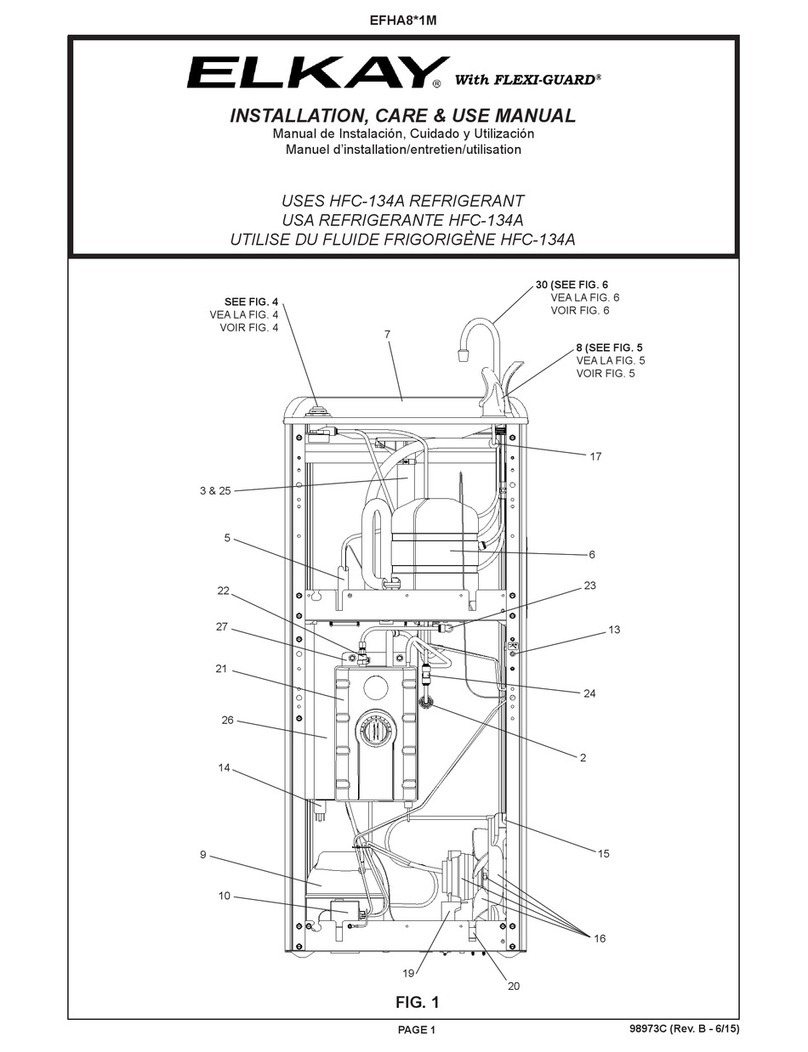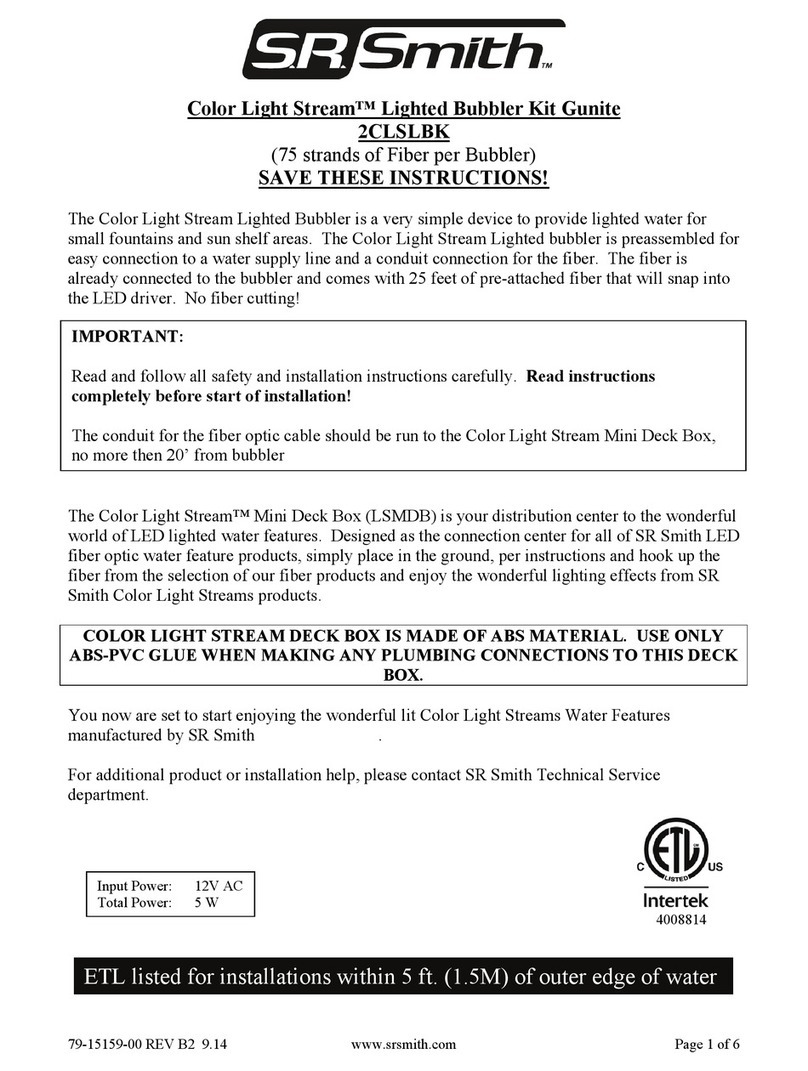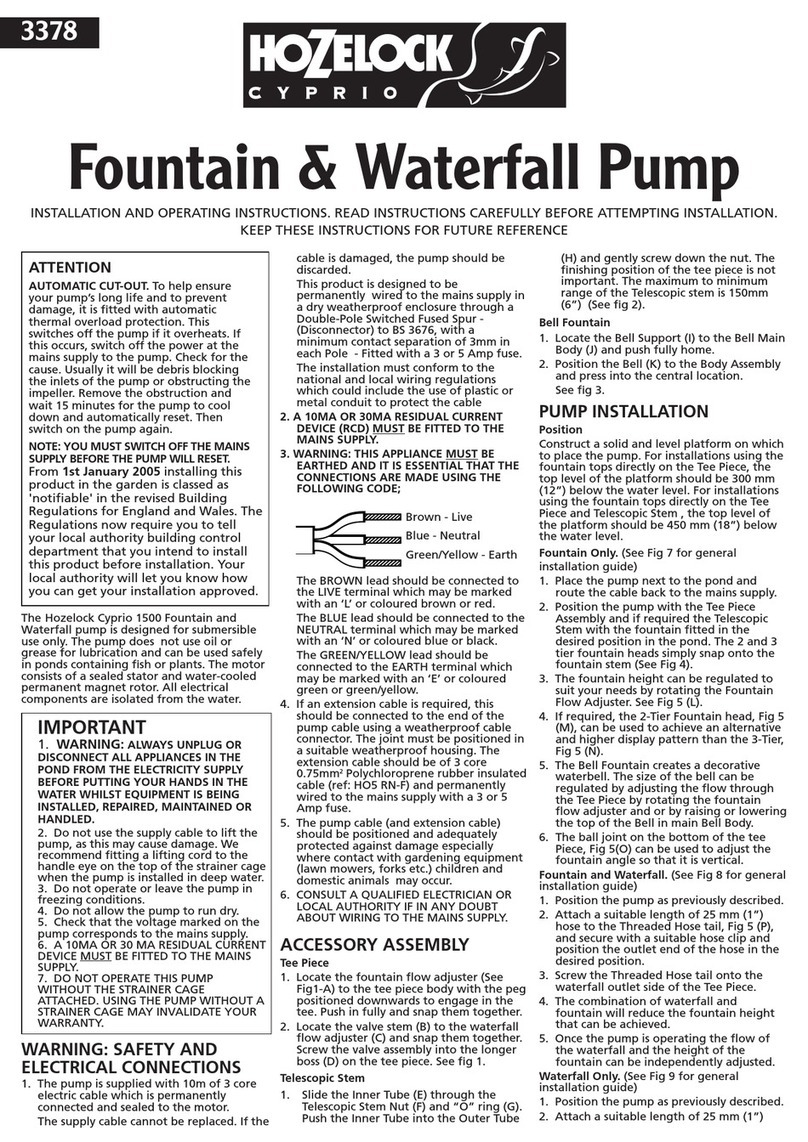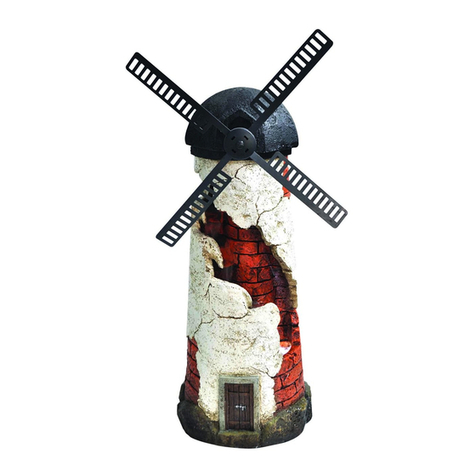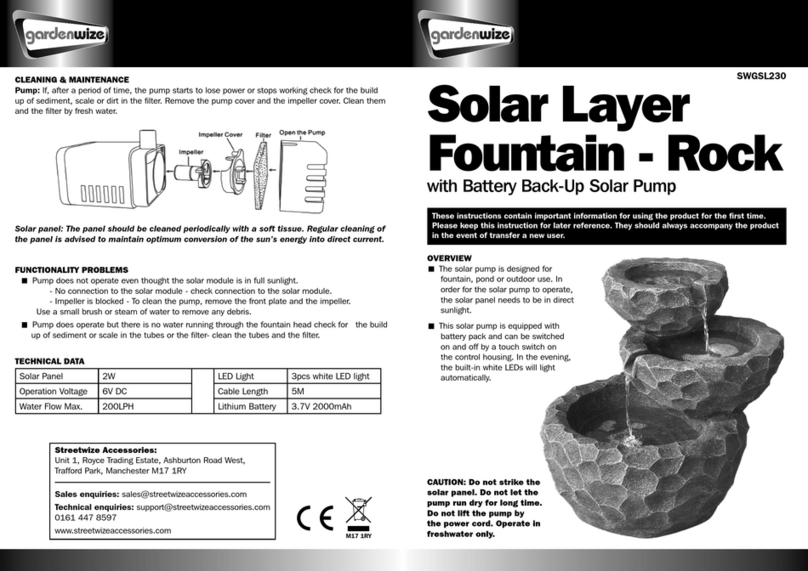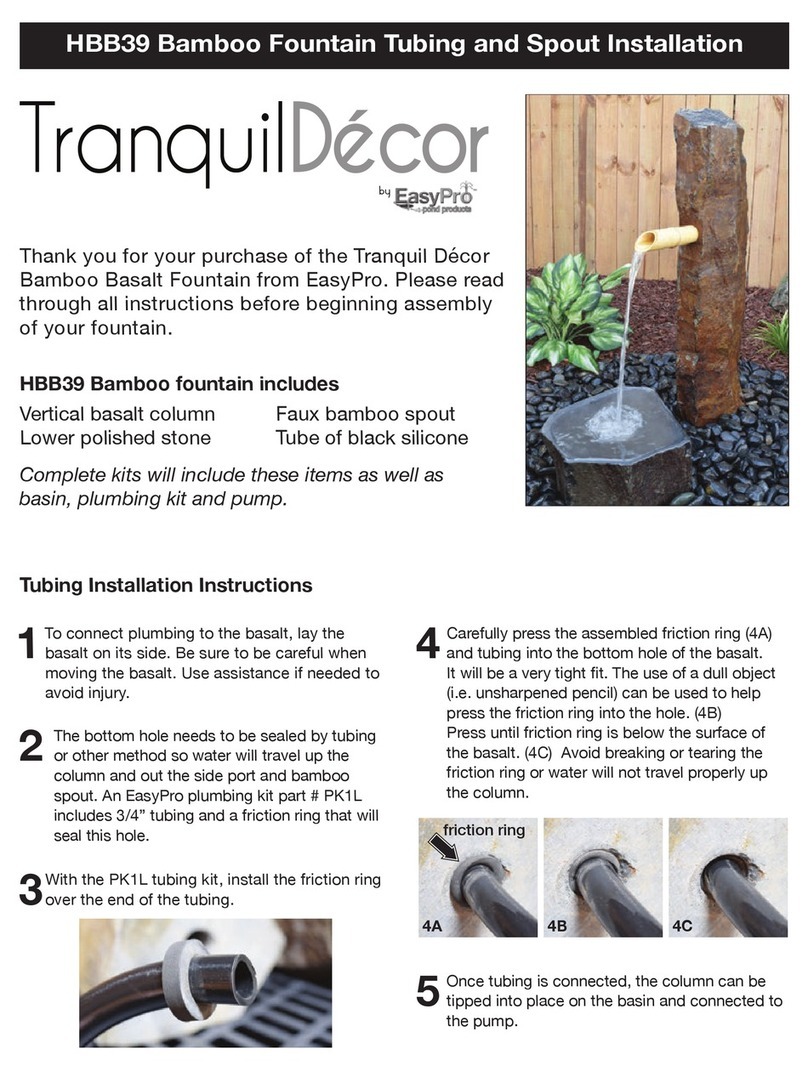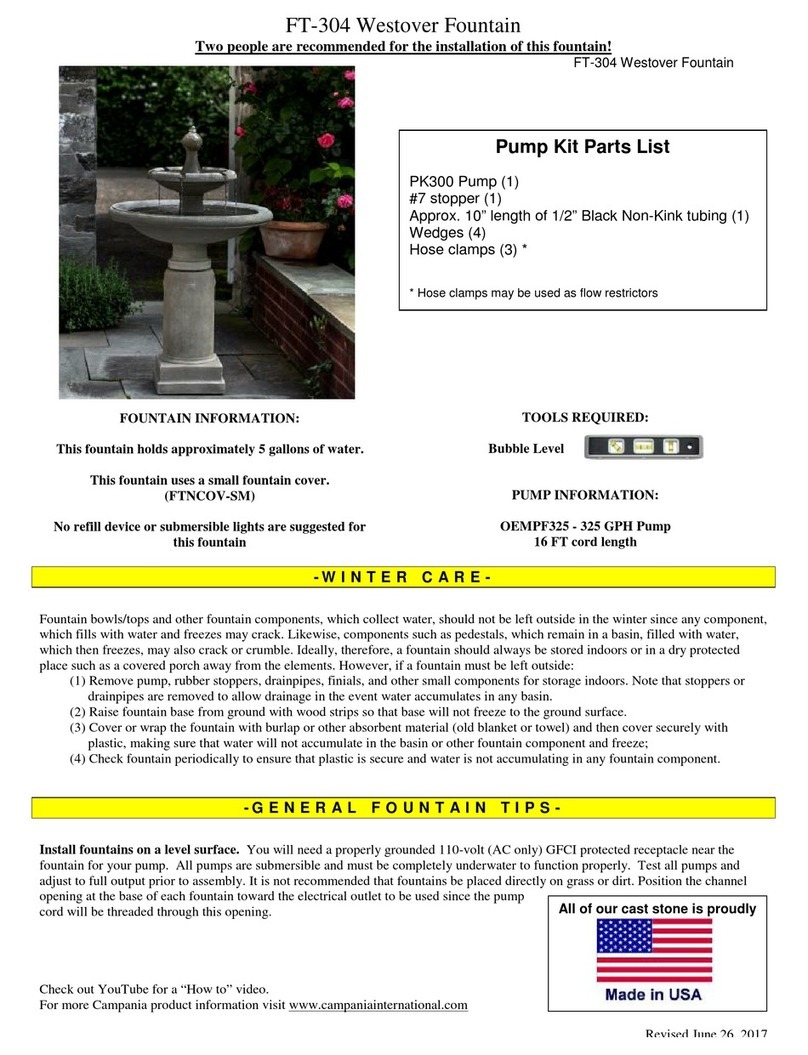
Operating Instructions For
B&G Portable Water Fountain Model #WB-4S
1. Fill the tank with water approximately 2/3 to 3/4 full.
2. Screw the handle in a clockwise direction, tightening the cap snugly on the collar of the tank.
3. Ten or twelve strokes of the pump will pressurize the unit for operation. Re-Pressurize with a few additional
strokes as needed while in use.
4. If there is air leakage and the tank does not maintain pressure, additional tightening to the pump assembly
may be necessary.
5. For drinking, hold the nozzle 12 to 18 inches away from the mouth.
Suggestions for making minor repairs and adjustments
to the B&G Portable Water Fountains
A planned program of preventive maintenance will extend the life of your "Water Fountain" by years.
The following suggestions may enable you to make minor repairs and adjustments to the B&G Portable
Water Fountain.
1. The Pump Unit involves the inspection and maintenance of three basic parts, i.e.; Special Pump Cup,
Check Valve, and the Tank & Pump Cylinder Gasket.
2. Check the lip of the Polyethylene Tank for any nicks or scars. If this surface has become damaged in any
way it could prevent the Pump Cylinder Gasket from making a proper seal. It is also possible that you are
not tightening the Pump Unit on the Tank tight enough to effect a good seal. Please make sure the gasket
is not broken and is sitting in the proper area.
3. Agood Pump Cup and clean Cylinder is essential so pressure will develop maximum efficiency when
pumping. Inspect the sidewalls of the special Pump Cup for cuts, folds or Double-ups caused by improper
insertion of the pump rod assembly into the Pump Cylinder. A defective Pump Cylinder (Cracked or Nicked
Internally) will cause considerable damage to the Pump Cup. Depending on how and where the unit is
used, the Pump Cup should be lubricated periodically with a few drops of Vegetable or Salad Oil. DO NOT
USE OTHER TYPES OF OILS OR GREASES UNLESS APPROVED FOR USE WITH FOOD. Oiling the
Pump Cup in this manner will help retain its shape and keep it moist enough so pressure will develop
maximum efficiency when pumping.
4. Inspect the Check Valve on the bottom of the pump cylinder, which may have become worn-and may not
be sealing properly. In this case, it should be replaced. Also, if any accumulation of sediment or foreign
matter has become lodged between the bottom of the Pump Cylinder and the Check Valve, this could result
in a loss of pressure. Please note that when the Plunger rises after the Tank is pressurized, the pump may
need a new Check Valve, or the valve is being held open with sediment and needs to be cleaned.
5. It is possible that your leak is occurring at the Siphon Tube Fitting. To check this point, proceed as follows:
1. Load the Tank with 3 or 4 gallons of water.
2. Pressurize the unit and tilt the bottle over on its side so that the water in the tank comes in contact with
the Siphon Tube Fitting on the top of the Tank. At the same time, build up pressure with the Pump. If any
liquid escapes around the Locking Nut on the Tank, it will indicate that you are loosing air pressure at
this point. If this is the case, tighten the Siphon Tube Fittings.
6. Always use B&G Replacement Parts. If you should have any trouble, please free to call our sales
department at 678-688-5601.
To Order Parts or if you need further help
contact your dealer or visit our website at ww.bgequip.com




